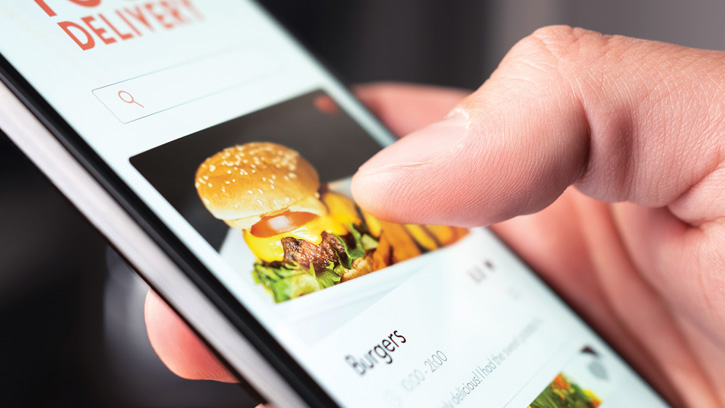Off-Premises Dining Is on Pace
Consumers | MARKET TRENDS
Off-Premises Dining Is on Pace
Despite disruptions driven by inflationary pressures and the fact that more consumers are choosing dine-in options as concerns about the pandemic wane, restaurant carryout and delivery will remain a significant food and beverage market opportunity.
Nearly three-quarters of millennials and two-thirds of Gen Z say takeout/delivery is “essential” to the way they live, according to the National Restaurant Association’s (NRA) 2022 State of the Restaurant Industry report. During a one-week period this past June, 60% of consumers bought dinner at a restaurant for off-premises consumption, down 6% from May, the NRA reports; 40% did so for lunch, down 5%; and 30% purchased breakfast to eat off-premises, the same percentage as in May.
In the first half of 2022, carryout (58%) continued to dominate orders in limited-service restaurants versus dine-in at 27% and delivery at 15%, according to Technomic’s Delivery & Takeout Consumer Trend Report. In full-service restaurants, dine-in accounted for 68% of orders, carryout 19%, and delivery 13%.
Targeting Takeout
On average, consumers place carryout/delivery orders four to five times a month, by Technomic’s calculation. Super heavy users who order takeout/delivery 10 or more times monthly account for 18% of takeout customers and are most likely to be aged 35–44 with incomes of $150,000-plus. Light users, who order just once or twice a month but represent 30% of “to go” customers, tend to be aged 65-plus with incomes under $25,000 and may well be an untapped value segment.
Grocery store prepared foods rank second only to fast-food restaurants for off-premises meal purchase frequency—just above fast-casual restaurants and convenience store prepared foods, per Technomic. And that means that targeting prepared retail meals with more sophisticated restaurant-style menu items is a smart strategy. Four in 10 consumers order monthly from a food truck or street vendor.
The five cuisines most frequently delivered by DoorDash in the first quarter of 2022 were American, Mexican, Japanese, Italian, and Chinese. French fries, burritos, Mexican bowls, chicken nuggets, sandwiches, hash browns, and cheeseburgers were the food items ordered most frequently. More Americans are ordering alcohol delivery from restaurants; in the month of February, one in four customers did so.
At Grubhub, the Impossible Burger posted the largest increase in the number of orders placed versus the previous year, albeit from a small base. Shredded pork tacos, apple pecan chicken salad, Detroit-style pizza, margaritas, pub mac and cheese, pork dumplings, chicken burritos, poke nachos, and lettuce wraps round out the list of top 10 menu items ordered more frequently.
Watch for TGI Fridays’ new fajita-style platters, Boston Market’s Rotisserie Chicken Nuggets, and MOD Pizza’s Cheesy Backyard Burger Pizza to add off-premises excitement. Datassential named KFC’s Beyond Fried Chicken as the top 2022 limited-time offer in terms of order frequency, with more than a quarter (28%) of adults saying that they would buy it all the time. Pizza Hut’s Big Dinner Box ranked No. 1 for delivery appeal.
Nine in 10 adults who order takeout say they would order a larger variety if the restaurant used packaging that kept the food warm and maintained its quality, according to the NRA. Soups, salad, desserts, and some beverages are pain points for delivery.
Expect foodservice operators to continue to prioritize off-premises capabilities. Although ghost kitchens remain popular, three-quarters of consumers say it is important that their food comes from a restaurant that has a physical location, per the NRA. Datassential reports that one-quarter (26%) of restaurants have transitioned toward more off-premises ordering and another 18% are considering doing so. Tim Hortons debuted a smaller format drive-thru in West Virginia. Taco Bell’s new prototype includes three drive-thru lanes below a restaurant on the second floor. Chipotle has an all-digital unit with no dine-in ordering called the Chipotle Digital Kitchen.


